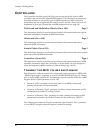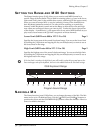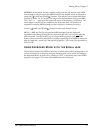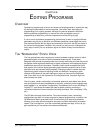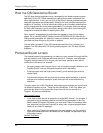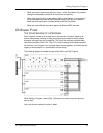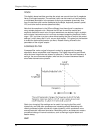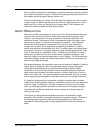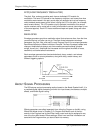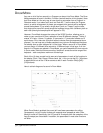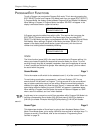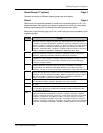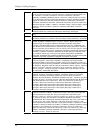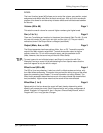
Editing Programs: Chapter 6
Each voice/filter combination is followed by an amplifier whose level can be controlled
by a variety of modulation sources. This allows for creating sounds with percussive or
slow attacks, particular types of decays, tremolo, etc.
Filter and amp settings can interact. If the filter cutoff is extremely low, then no signal
will get through, no matter how the amp is set. Similarly, setting the amp for a short
decay won’t let you hear any filtering set for a longer decay. This is because the
volume will reach zero before the filter decay finishes.
ABOUT MODULATION
Modulation modifies some aspect of a sound over time. Since oscillators make static
sounds (unlike acoustic instruments, whose timbre and dynamics change—often
radically—over the duration of a note), modulation is the key to making rich and
expressive sounds. The vibrato of a flute, the expression pedal of an organ, a wah-
wah pedal on a guitar--all of these are examples of modulation. You're probably
familiar with the mod wheel of a synthesizer, which typically adds vibrato to a
Program as it is raised. But in synthesizer programming, modulation is used to
control even the basic characteristics of a voice: its attack, decay, and release times,
for example. Every box in the signal diagram on page 49 pointing towards the Voice,
Filter, or Amp boxes is a modulation source. The amount of modulation, the time it
takes place, and what controls (such as key velocity, footpedals, aftertouch, mod
wheel etc.) affect it are important parameters in every Program. The QS provides the
modulation flexibility of patch cord-based instruments, but with the convenience and
ease of use of digital technology.
With some parameters, the modulation amount can be positive or negative. A positive
control signal increases the value of the parameter being controlled. A negative
control signal decreases the value of the parameter being controlled. Setting
modulation to 00 turns off the modulation source. Example: Keyboard velocity can
either make a sound brighter the harder you play, or make it less bright, or have no
effect on the Filter at all. You have the freedom to set modulation any way you want,
even in ways that are the opposite of what they would be on an acoustic instrument.
If a “baseline” setting exists for a parameter, modulation amounts add or subtract
values from the existing setting. However, modulation cannot force a value beyond its
maximum range. For example, if the Amp is already at its minimum value (lowest
level), you could apply positive modulation to raise the level. But applying negative
modulation will not affect the Amp level, since it's already at its lowest value and
cannot go any lower.
The QS lets you assign several modulation sources to one modulation “target”
parameter, which allows for interaction between two modulation signals. Example: If
the Amp parameter responds to both the envelope generator and a pedal, the
parameter will follow the general envelope shape but will also be influenced by the
pedal.
QS7/QS8 Reference Manual 51



